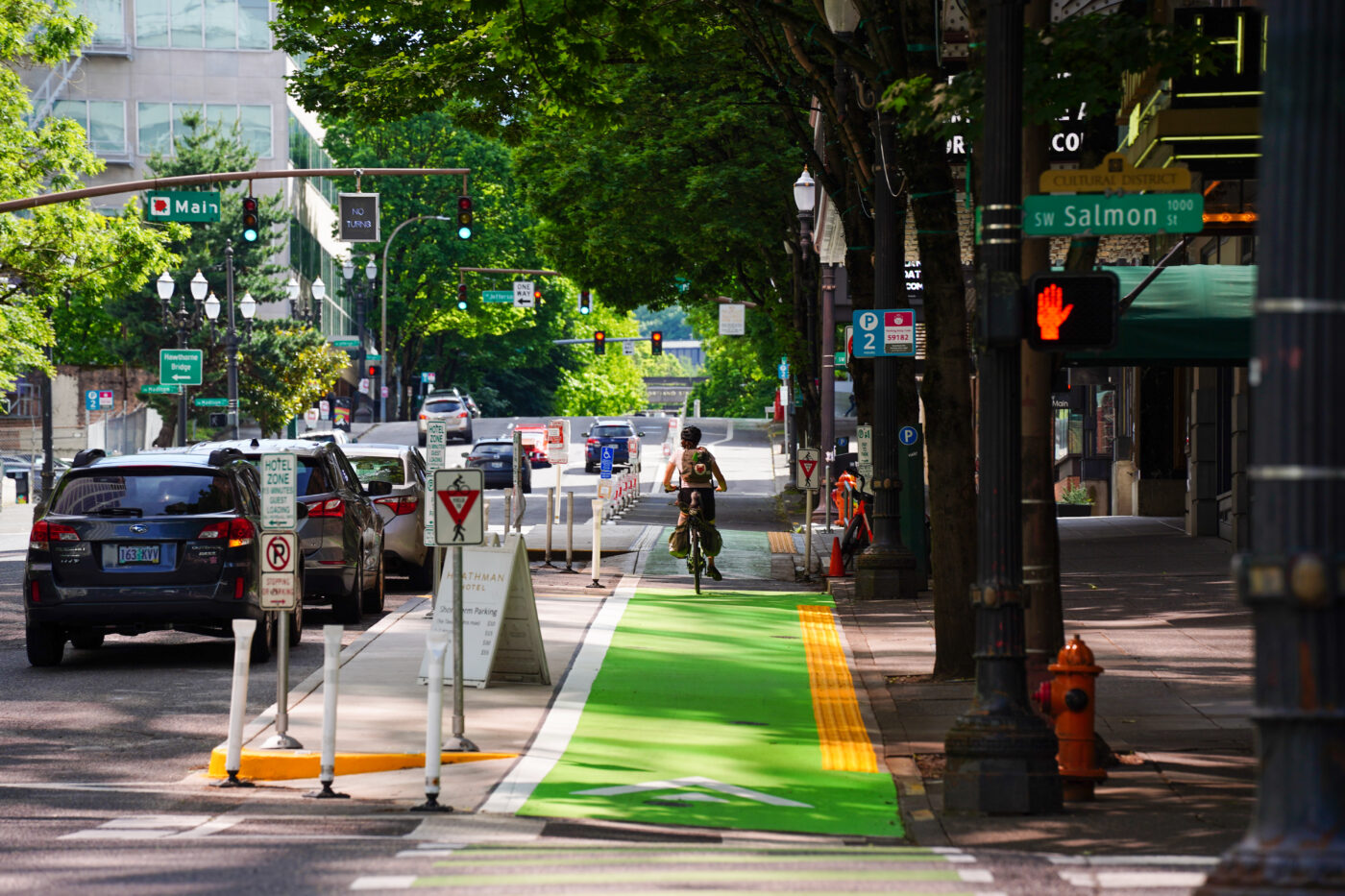
Loading platforms have come a long way since 2020. Back then, when the Portland Bureau of Transportation saw them as a way for bus operators to service customers away from the curb, while still allowing bicycle traffic to roll by, the agency said, “Over the next several years, this tool will be implemented in a variety of contexts and locations throughout the city.”
Four years later and PBOT has not only kept their word, they’ve significantly improved the design and implementation. The three newest loading platforms installed on Southwest Broadway are a big upgrade. I still want to see how they do under high volume situations, but after spending some time with them a few days ago, my first impressions are very positive.
Spurred by concerns of bad interactions between guests and bicycle riders, hotel managers and valet staff worked with PBOT to come up with a solution that would work for everyone (for more on how these relate to the Broadway Bike Lane Scandal, read this story). With parking-protected bike lanes, it was too easy for folks outside busy areas like hotel loading zones to park illegally against the curb. And without adequate signage or design cues; hotel staff, guests, and bike riders didn’t always navigate the right-of-way with each others’ safety and convenience in mind.
Enter these new platforms:
Benson (SW Oak)
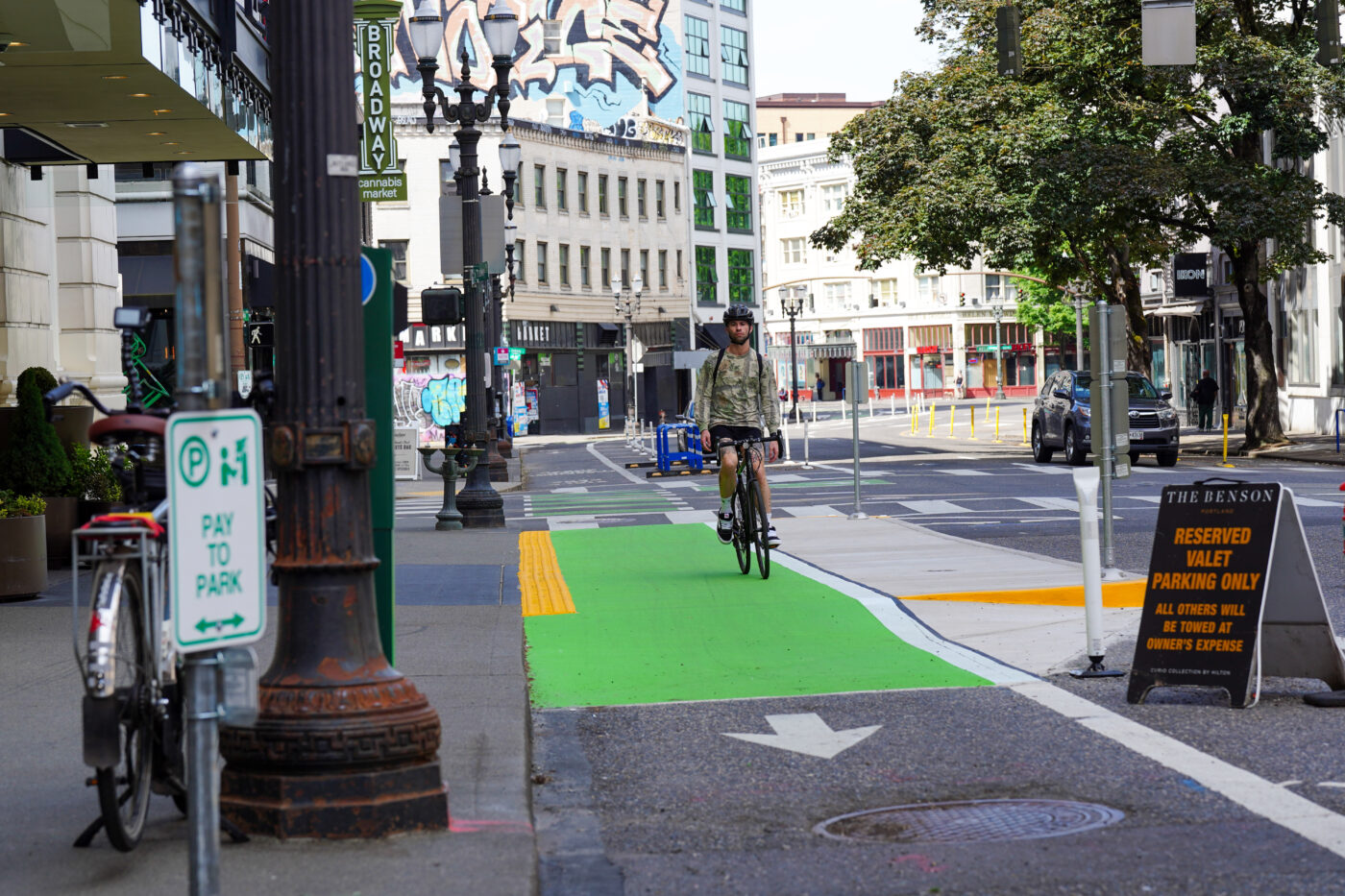
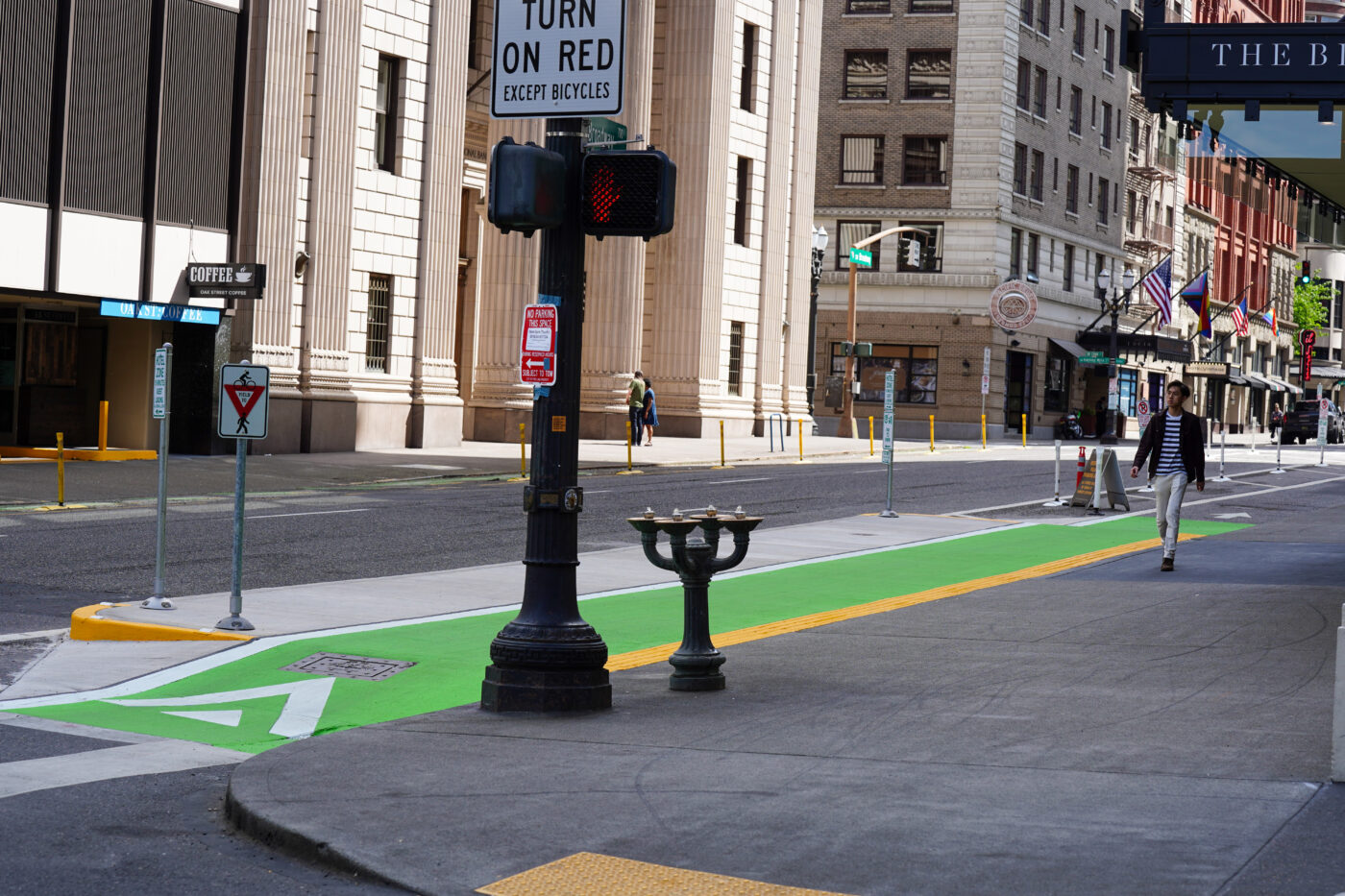
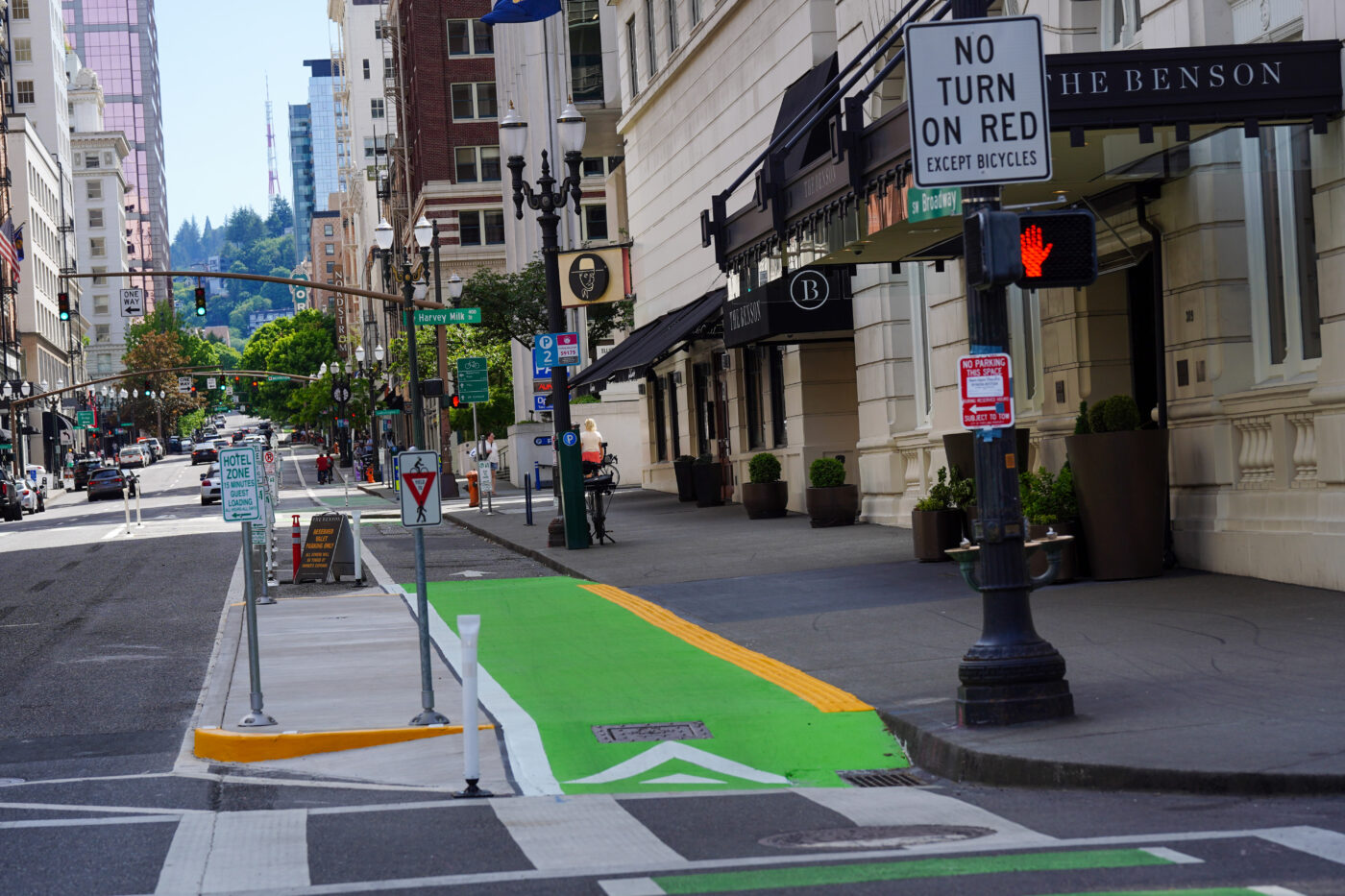
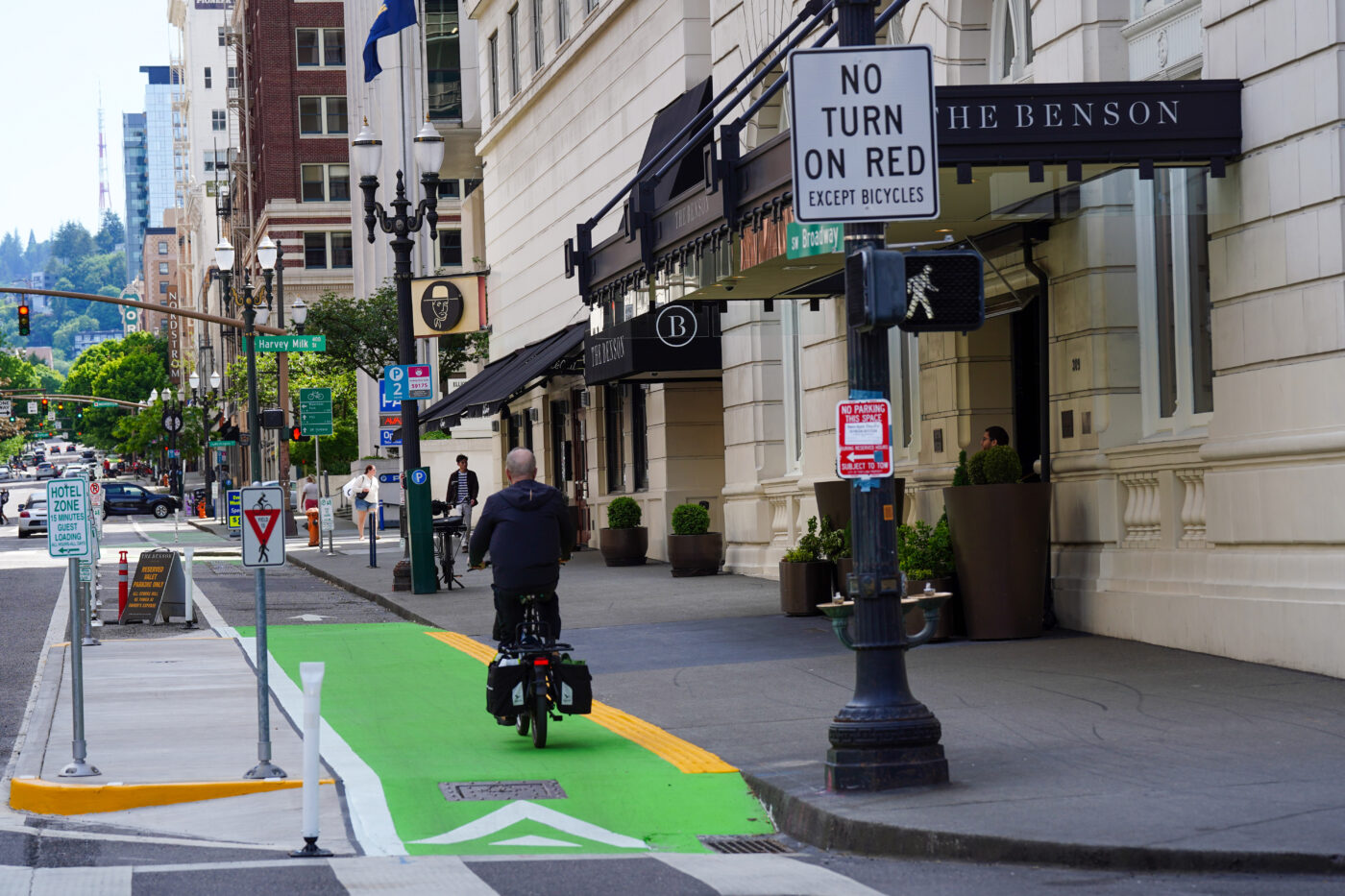
Heathman/Schnitz (SW Salmon/Main)
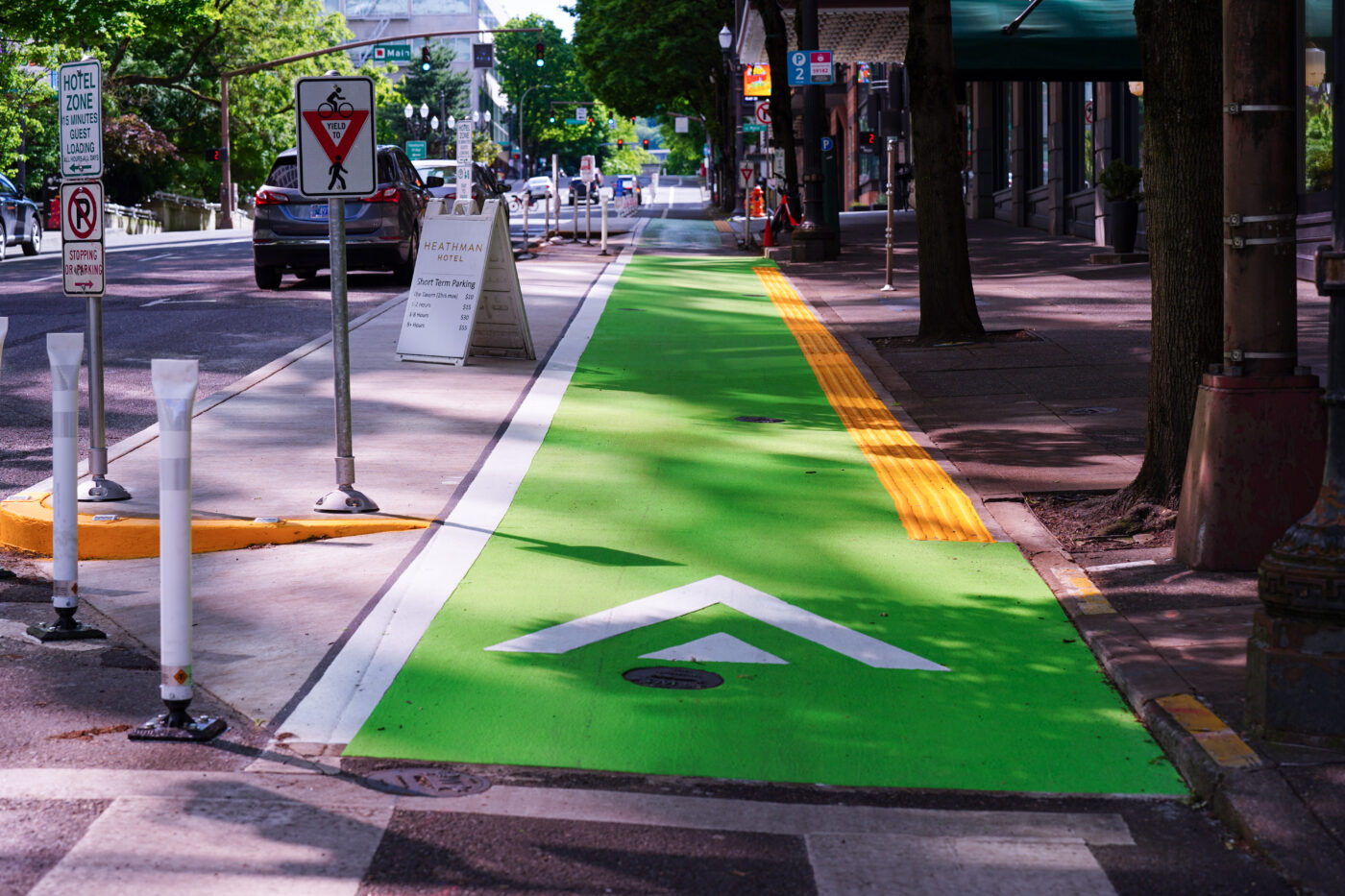
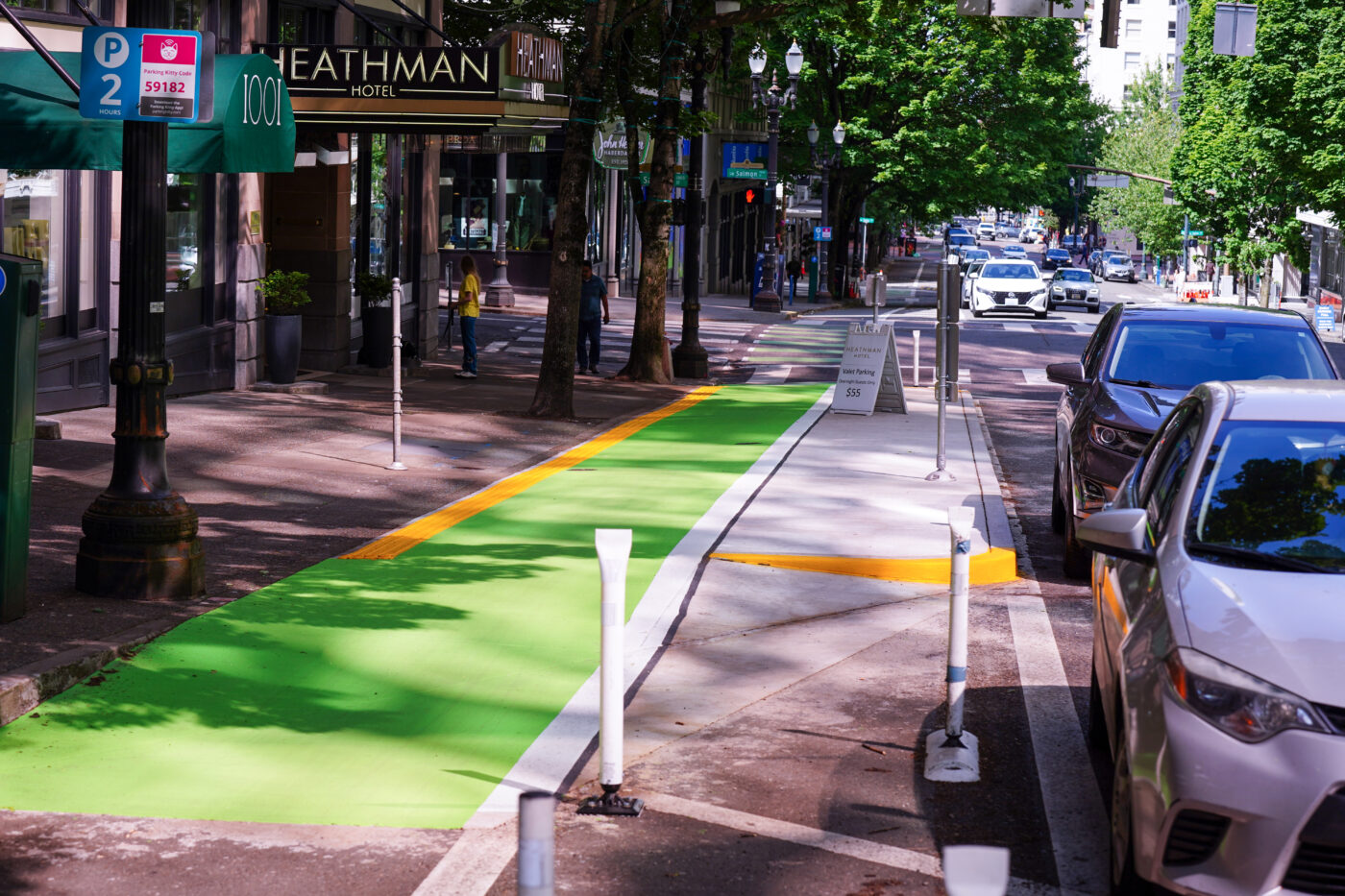
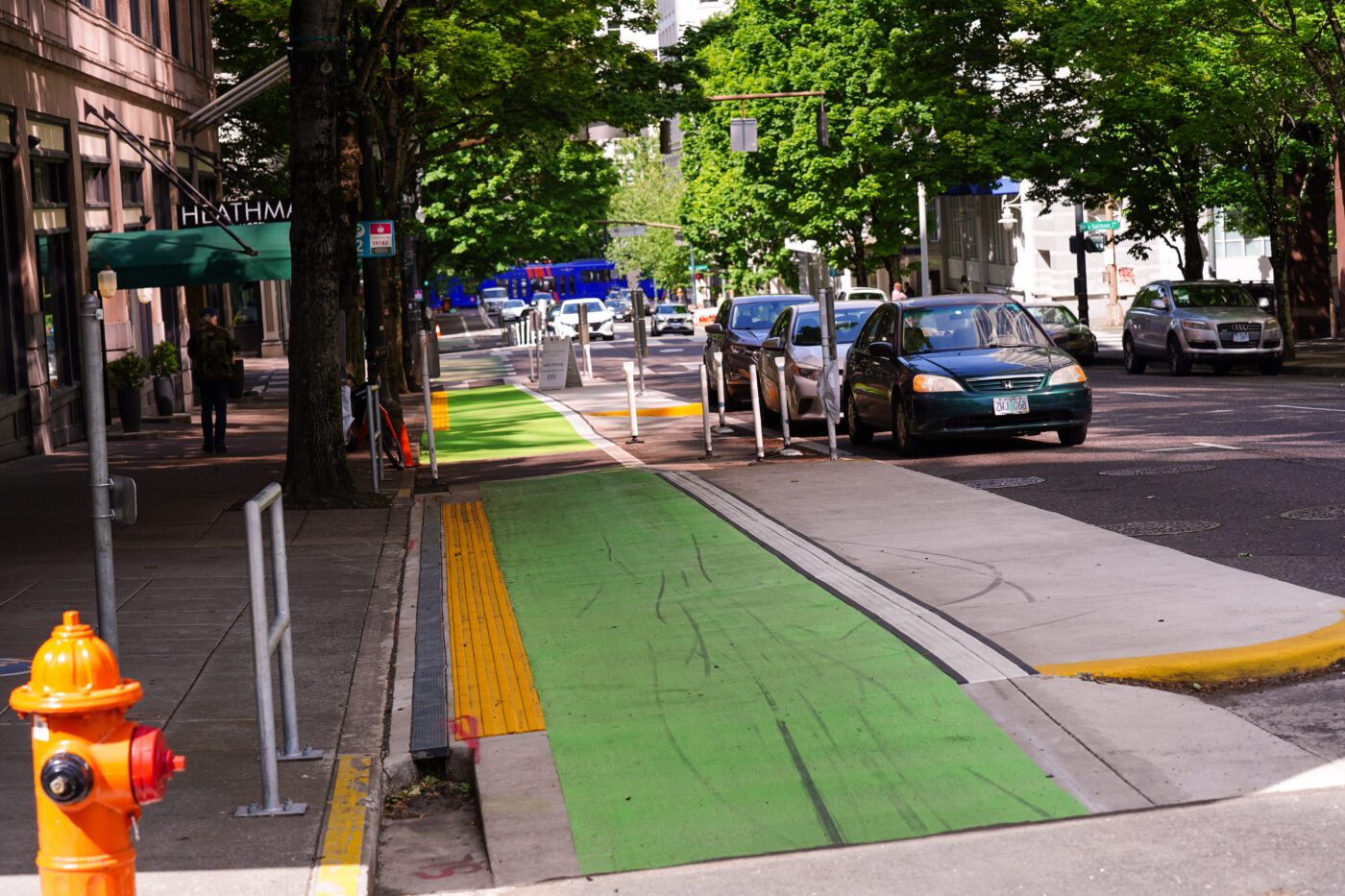
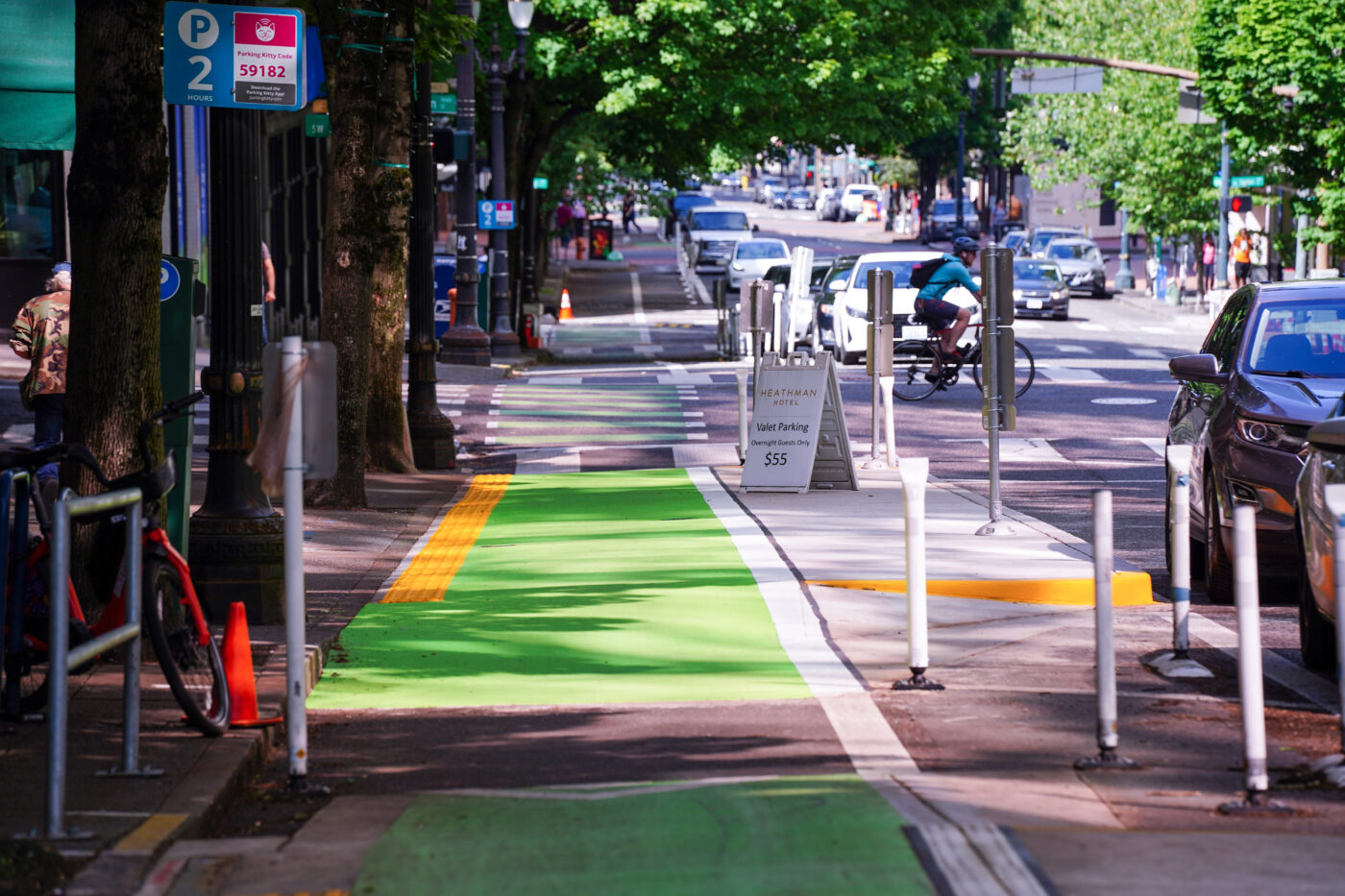
Hotel Vance (SW Columbia)

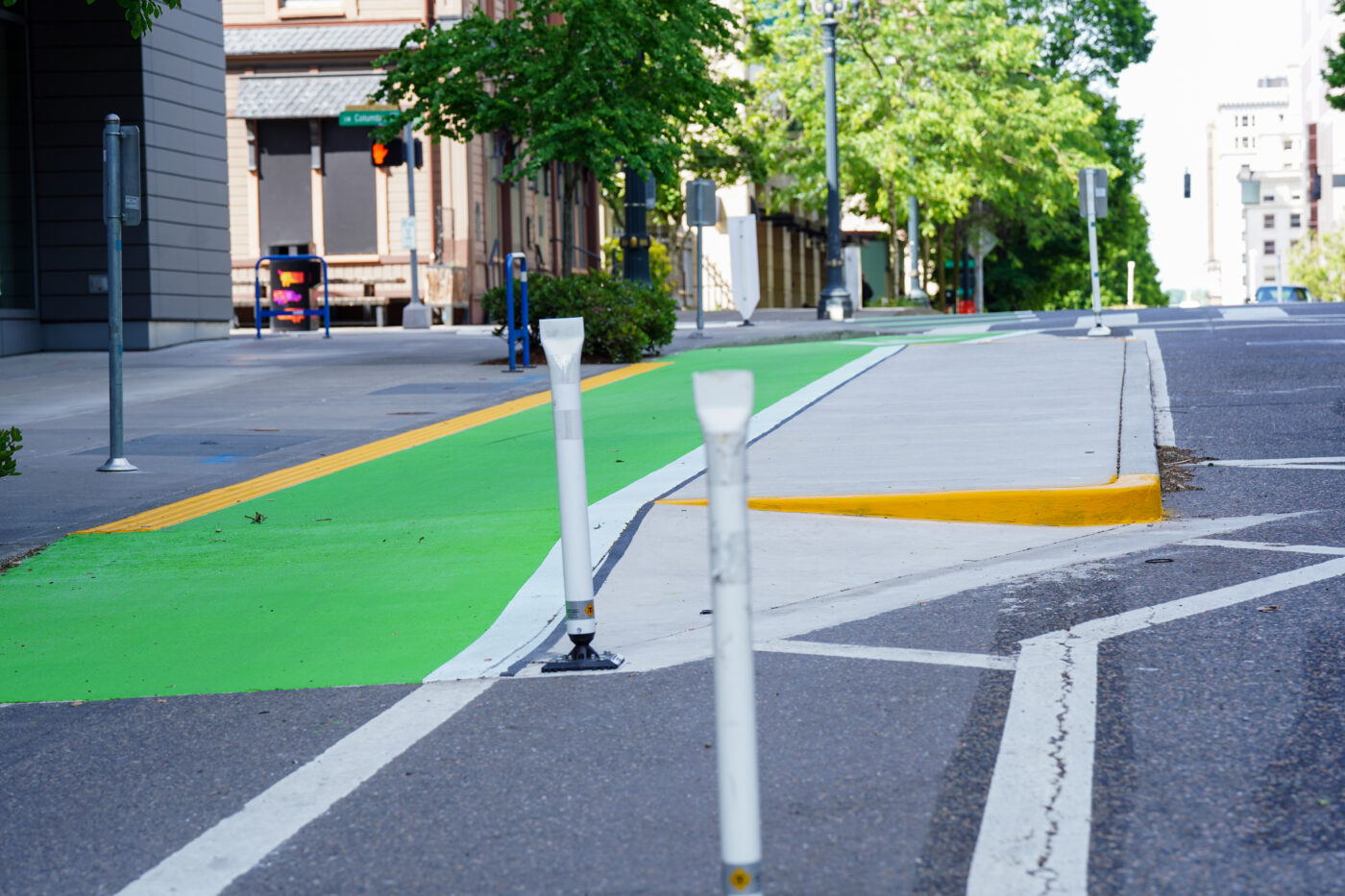
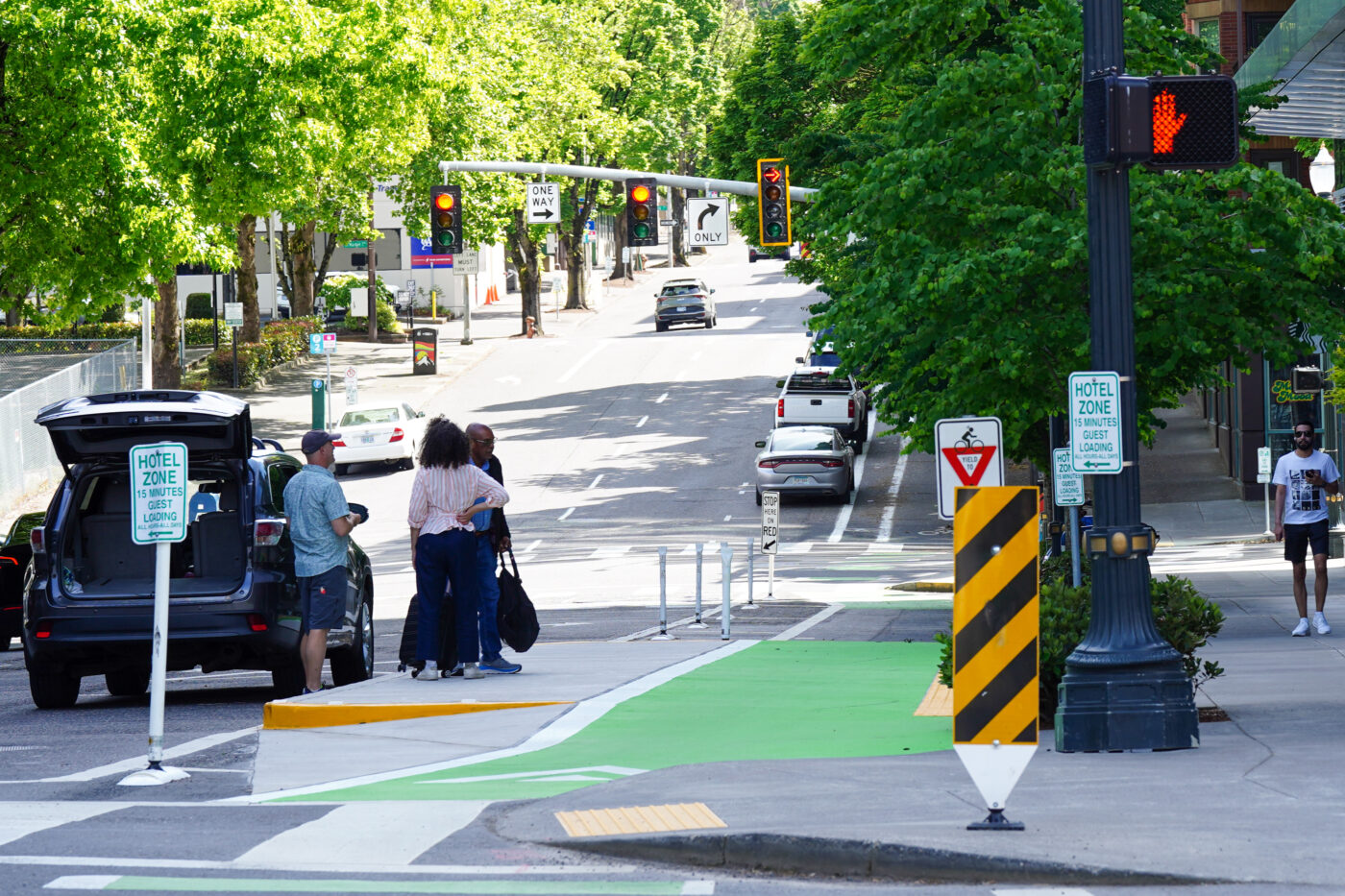
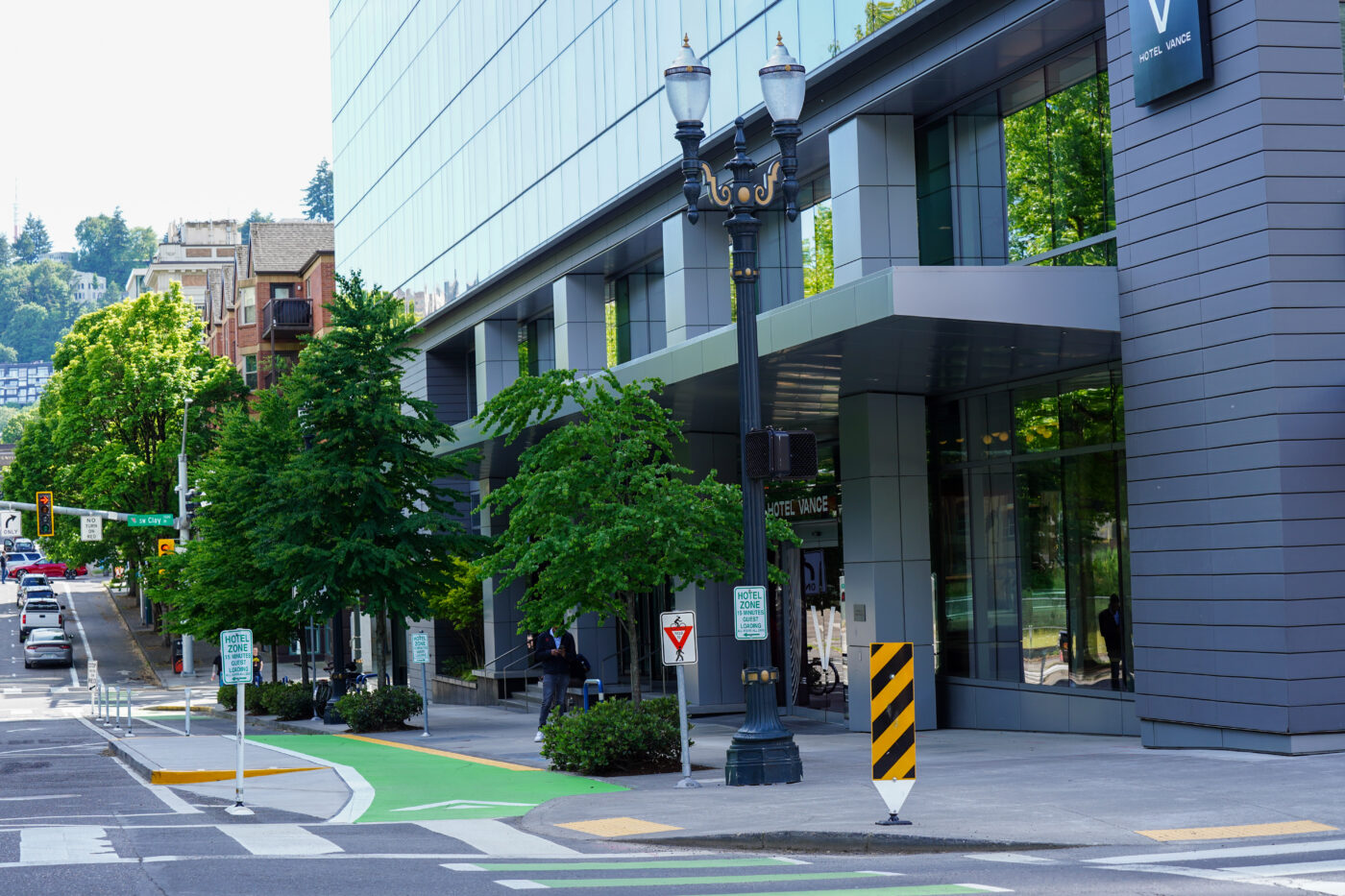
They are fully hardscaped with permanent concrete ramps and curbs, the bike lane is painted solid green, there’s minimal use of plastic posts, and there’s a grooved, yellow divider between the bike lane and sidewalk. There’s also ample length (about 2-3 car parking spots) for gentle slopes up and down and signage that communicates expected behaviors for all users.
There are three new platforms on Broadway: in front of the Benson at SW Oak, the Heathman at SW Salmon, and Hotel Vance at SW Columbia. (These are in addition to existing platforms at NW Couch and SW Main.) PBOT says they cost about $90,000 a piece.
They all worked well for me. The one at the Benson has a bit of a rough entry angle, but other than that it was smooth sailing. And because there are now two of these upgraded platforms on the block between Salmon and Main — in front of the Heathman and the Arlene Schnitzer Concert Hall — it’s almost like we have an above-grade, separated cycle-track for that entire block.
In addition to practical benefits, I believe these platforms have intrinsic value and are the type of thing that can create a positive feedback loop for bicycling and bike facilities more broadly. It goes something like this: When we build high quality bike facilities, it leads to better behaviors by users and more respect for the people using them, which in turn leads to political inertia to build more high quality infrastructure, and the cycle continues.
Then of course I visited on a slow day downtown, so maybe my bubble will burst on a busy day when the bike lane and hotels are more crowded. We’ll see. For now, I’ve got a very good feeling about these and hope they’re an example of the type of quality we’ll see on the nearby SW 4th Avenue project PBOT is working on.
Have you ridden these yet? What do you think?
Watch video below:


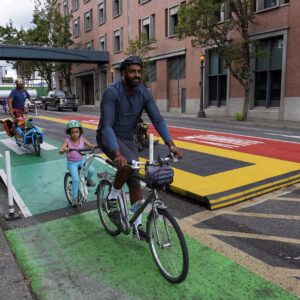


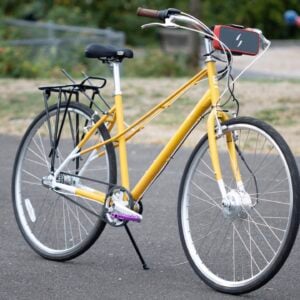
Thanks for reading.
BikePortland has served this community with independent community journalism since 2005. We rely on subscriptions from readers like you to survive. Your financial support is vital in keeping this valuable resource alive and well.
Please subscribe today to strengthen and expand our work.
I rode them on the PSU Farmers Market ride Saturday and wholly agree. Thought they worked wonderfully.
I gotta wonder why they couldn’t just fill in the gap between the Heathman and Arlene Schnitzer platforms. How much more expensive is it to just build the full-block cycle track compared to forming and grading an additional corner radius and exit ramp that will probably make maintenance and sweeping between the two raised portions more complicated? I’m sure patrons would enjoy the extra loading space as well.
I was wondering the same thing. Feels like an obvious move
keep in mind the Schnitz one was done at a different time, so it’s not like they did both simultaneously and left out the gap. Also, my hunch is that these things are very specific in terms of scoping and budget. That is, PBOT gets approval to build a very specific thing and while to us it seems easy to fill a gap, to a big bureaucracy it’s a huge headache that no one wants.
Nice to see a problem solved with a well thought out solution instead of a knee-jerk regression to what was there previously!
Oh I see what you did there! Haha.
Mini roller coaster
I’m with you, Dirk. The cost to cyclists is a short, sharp climb, so that people walking from cars aren’t inconvenienced. I get why people like these ramps, but I don’t think cyclists should pay the cost every time. Since cycling is harder than every other form of transportation, making cyclists pay the cost of keeping everyone safe just discourages cycling.
These are a big improvement, but are they not done yet?
They have no tactile warning strips on the street side of the bike path. Apparently PBOT believes people needing tactile warnings only leave hotels, but never arrive at them.
It doesn’t take a code expert to design these things. All it takes is for a designer to imagine using them from the standpoint of someone with a disability.
Adding to the frustration, the City has a simple online form for reporting accessibility issues at City facilities that would be perfect for me or anyone else to report these. But people are not allowed to use the form unless they have an ADA-covered disability, or are representing someone who does, and has that person’s permission.
But the most frustrating thing is that these projects have gone through so many staff people, consultants and reviews, yet nobody noticed that people with impaired vision who get dropped off will step right into bicycle traffic without ever knowing it (until they get hit or yelled at).
And of course the missing tactile warnings also make the path hazardous for people biking, given the possibility of dropped-off hotel guests wandering into their path.
https://au.news.yahoo.com/call-ban-londons-floating-bus-105624159.html
Thanks–that link’s perfect. It shows that London’s standard design DOES have the tactile warnings on both sides, and includes missing tactile warnings on the list of “significant” design issues. So it’s a recognized design issue elsewhere, that PBOT overlooked.
The London design also does something that could address the comments above criticizing Portland’s short, sharp ramps. It only raises the bike lane for a few feet, instead of the whole width of the island. If Portland did that, the bike lane could have long, gentle ramps up to and down from it. That design might also tend to concentrate most walking across the bike lane to a more defined area, instead of making the entire length of the island a pedestrian crossing zone. London’s white stripes also help encourage people to cross at that point (although the videos show not everyone does).
I reported the missing tactile warnings to the City–will see what happens.
I contacted the PDX311 staff about this, and they forwarded it immediately (on a Saturday even!) to PBOT, and a PBOT staffperson responded immediately after talking to PBOT engineers. The engineers basically didn’t see my concerns as relevant. However, the PBOT staff person who contacted me said they’ll go back to the engineers with my specific arguments. I’m hopeful they’ll agree to add the warnings.
One thing that bothers me about PBOT’s decision that people don’t deserve tactile warnings on the platform side–beyond the obvious dangers for hotel guests and people biking through–is that it exposes the hotels to liability.
If someone gets hurt, the hotels are obvious targets for lawyers. PBOT just went through some effort to either get hotels on board with these platforms, or to build them over the hotels’ objections. If someone gets hurt, it lets the hotel (perhaps under pressure from having just been sued) tell PBOT, “We told you so. We said these were unsafe and you insisted they’d be fine, and now we have an injured guest and a lawsuit against us because we listened to you”.
And of course it allows every bike-lane-wary business or group to also say, “We told you so!”. Then PBOT can say, “We tried with the bike lanes and platforms, but it just didn’t work, so unfortunately we have no choice but to removed them”.
It’s crazy PBOT welcomed this situation in order to save the trivial cost of some tactile warning strips. Hoping they’ll reconsider.
I realize this is an old topic now, but I’ve been asking at PBOT why they didn’t include ADA tactile warnings between the platform and bike path, and their final answer is that that was intentional. But they aren’t giving any justification for it.
I’m pursuing getting it fixed without PBOT, because it still seems dangerous for people needing the warnings, and for the people on bikes they may unknowingly cross right in front of.
PBOT did point out that they also did the Arlene Schnitzer Hall platform similarly, which to me just means they did that one wrong, too.
I’ve been reminded of this “not cars, so not important” attitude with several more recent articles here, especially the closure of the Steel Bridge path.
I really do not like them at all, having ridden them now, and think about it from the out of town visitor who is tired from a long flight and Uber from PDX who steps out into oncoming bike traffic. It is a collision waiting to happen. But then, I never liked the Faustian bargain that the city made in creating the Broadway “protected” bike lane anyway trading the potential for getting doored for the potential of getting right-hooked, peds stepping off the curb mid block and passengers getting out into the bike lane. You can throw down all the green paint you want, but unless someone knows why it is there, it doesn’t make a difference. I would rather the city have spent the $270,000 *maintaining* some of the infrastructure they have already installed or sweeping the bike lanes a little more frequently.
Exactly, Brendan! I’ve been biking across the Broadway Bridge to PSU more or less regularly for about twenty-five years, and I much prefer how it used to be. Now I’m constantly on the lookout for pedestrians who do not expect to encounter a bike between their car and the curb, or perhaps assume that the bike path is some sort of sidewalk. There are also folks on the sidewalks near the bike lane who are too high or in too much emotional pain to care what the bike lane is for, or pedestrians who step out into the bike lane while waiting to cross at intersections, not realizing that the bike lane is for (bike) traffic. It would be a great system–if everyone in downtown Portland was well-informed, alert, thinking clearly, and considerate of others.
I’m with you, Dave! Every step “forward” has only made riding on Broadway worse. I ride this lane at least three times a week. It’s a giant game of frogger. There are three competing right hook treatments in the span 20 blocks; I physically flinch making the car lane swap between Irving and Glisan, and I could set my watch to getting right hooked at the Columbia Store at SW Taylor. Half the time there’s a car physically parked in the bike lane in front of Nordstrom. If it’s not a car, it’s a pedestrian standing in the lane waiting to cross Broadway against the light. The ramp in front of the Benson is so steep it can’t possibly be legal. And how can one bike lane have so many utility access covers and storm grates? I’m what the city calls a “strong and fearless” rider and I am never more afraid of a collision than I am on Broadway. Sure the green paint looks pretty, but it’s the worst lane in the entire city if you ask me (besides the sidewalk disaster northbound at 7th and Tillamook).